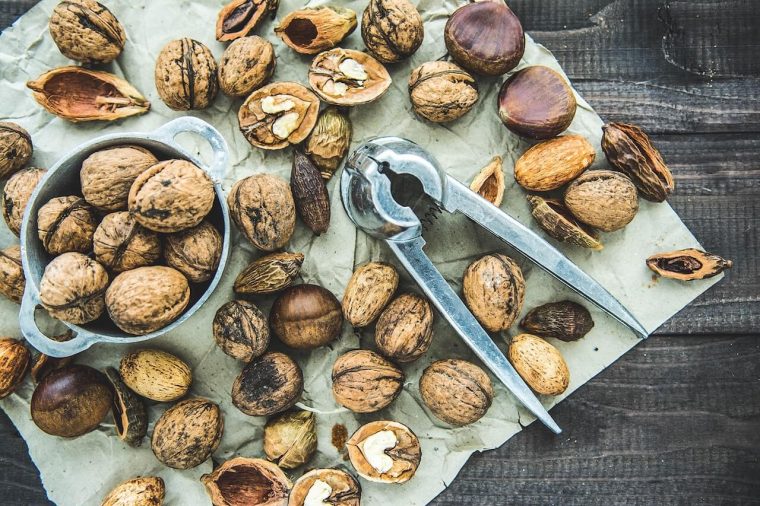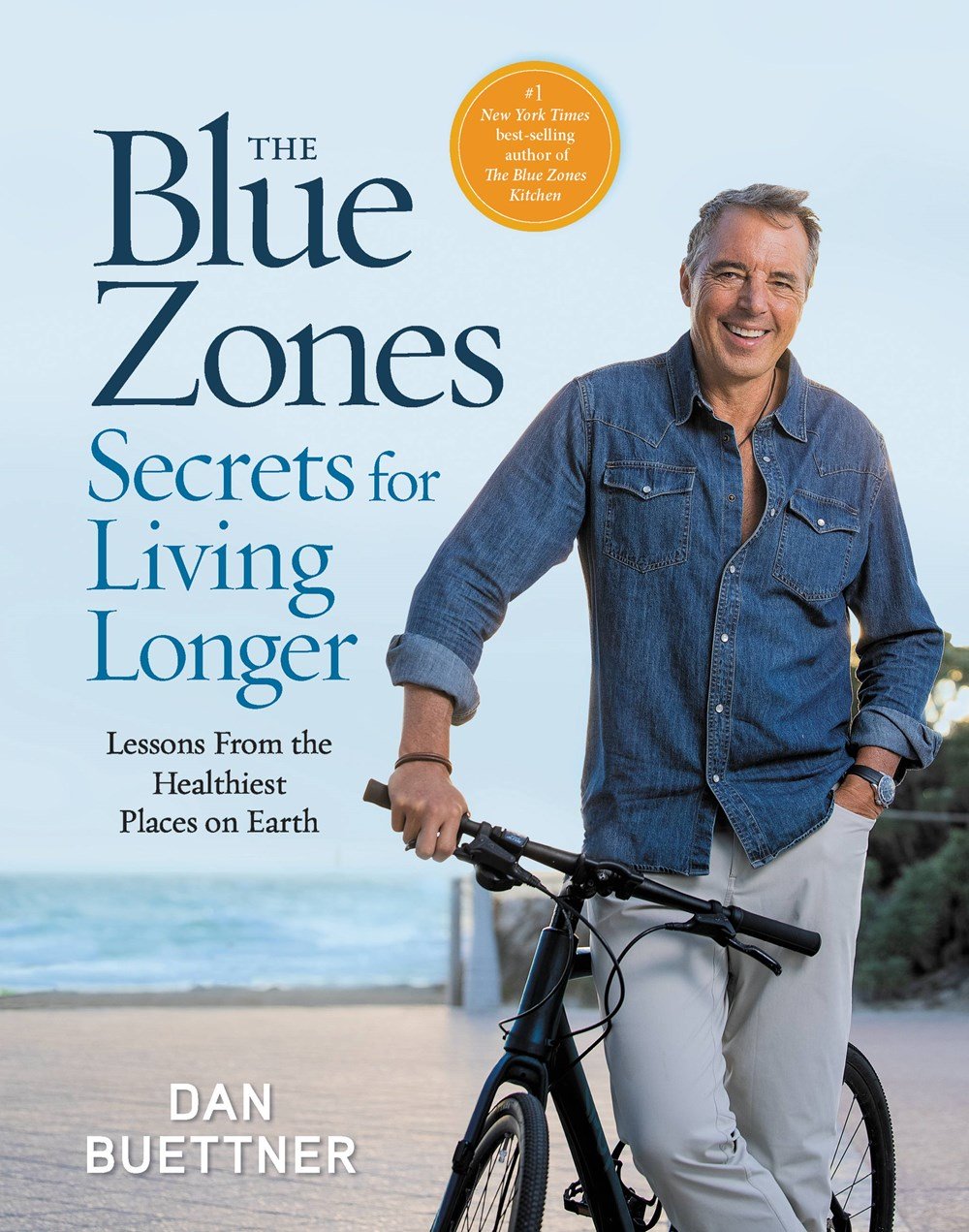In the grand scheme of things, America is a country of picky eaters. Not everybody, of course—but certainly on average, people stick to what they like and avoid what they don’t. And unfortunately for us, “what we like” has drifted further and further away from a healthy, longevity-friendly diet (especially because these preferences trickle down from one generation to the next).
Fortunately, picky-eater syndrome is curable, and people do often cure it. If you think this might apply to you, just remember: the first step in any good direction requires you to face that direction.
When we gaze wistfully at the blue zones and wish we could have what they have, I think part of what we envy is, in a phrase, what they’re used to. To be more specific: a lot of them already like the kinds of foods that centenarians wind up eating, simply because they’ve been eating these foods all their lives.
By contrast: a lot of us might feel proud to be American, but we’re NOT proud that we eat the way we do, and we wish we didn’t have to overcome decades of bad habits (many of which we were born into). More to the point, we can’t picture how the change could happen—how we could become less picky and healthier eaters.
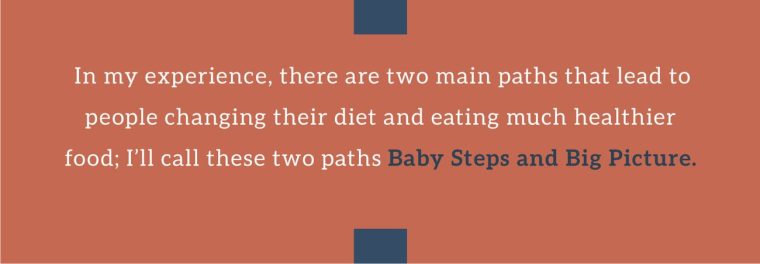
These are not the only two stories out there, of course, but I think they’re representative enough.
On the Baby Steps path, you have the people who start out as picky eaters, but they find ways to gradually expand their palette; they add one food at a time, they come back and try things again, they test different cooking methods, and so on. Once they’ve expanded their tastes enough, they have way more confidence about food in general AND they have enough healthy-eating options at their disposal that they can choose to cut out the bad stuff and they don’t feel totally lost.
On the Big Picture path, you have the people who are struck by some epiphany and find the power to make drastic changes in their diets (and never look back). In some cases, that epiphany arrives as an emergency like cancer or heart disease, and the person realizes that they will literally die if they don’t make a change. But in plenty of other cases, it just surfaces one random day as a moment of clarity. Quiet as a whisper yet clear as a bell, the person realizes that they want to change—or at least, that they will have to change to get something they want, like (easy example) more time with their grandkids.
This edition of Eating to 100 is split accordingly. In the first article, I’ll tell you more about one of my favorite health foods for picky eaters (expand those palettes!) in the hope that some of you will pick ‘em up whenever you need a crunchy, delicious snack.
In the second article, I’ll be attempting something bigger-picture: explaining what is and isn’t problematic about high-fructose corn syrup (HFCS) in the modern food scene. It’s a hot-button topic, but that’s another way of saying that there’s a lot of confusion out there, and a lot of context missing. My goals are to resolve the confusion and restore the context around HFCS.
Fulfilling both of those goals will actually require a multi-part series… so that’s exactly what we’re starting today! While I won’t get to dig into the history today, I will be able to clear up one big misconception and explain why the stink-eye we aim at HFCS is somewhat out of focus. Clearly something isn’t right in a world with as much HFCS as we have—but as I’ll start to explain, people often don’t realize how far they need to zoom out to see the real problems with it.
Enough said for now. Let’s talk about nuts!

Personally, I love all kinds of nuts. I’ve liked certain varieties of nuts for as long as I can remember, and my taste has expanded over time.
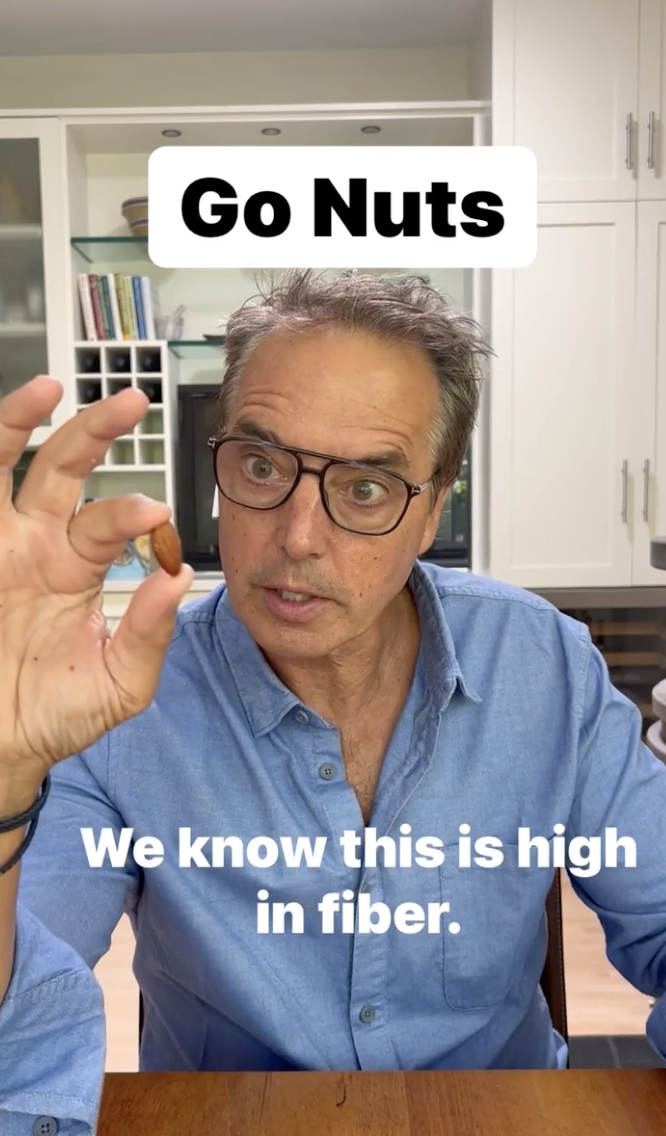
But here’s the thing: I’m a health-food guy, and I also have some self-awareness. I’ve written countless paragraphs like the above, with “nuts” swapped for other longevity foods like beans, greens, and whole grains.
I’ve meant what I’ve said every single time—I really do love all of those foods—but I also realize that many of you feel differently about how things taste (especially fruits and vegetables), and I can’t necessarily change that.
So, in most cases, I talk about longevity foods with a coaxing mixture of enthusiasm, facts, how-to, and sensory details. I always hope that you’ll decide to step outside of your comfort zone, but I know that (statistically) it doesn’t usually happen.
And yet, when I talk about nuts, I’m unusually hopeful that you’ll take this health-food information and do something with it. I say so, first of all, because nuts are more popular than most of the health-food staples I discuss consistently.
But perhaps more importantly, nuts are by far the most snackable of the blue zones’ staple longevity foods—and I don’t need to explain why healthy, high-quality snack options are in demand nowadays! Nuts are compact, they don’t require any cooking, they’re relatively filling, and they provide our taste buds with some of the crunchy, savory delight that we’d usually seek in snacks that are far worse for us.
A few quick pointers on nuts, why they’re good for you, and which ones you should crack open first:
The biggest reason for nuts’ inclusion in the world’s longevity diet is, in a phrase, nutrient density. That doesn’t just mean that they have a lot of nutrients; it means that they have a lot of nutrients per calorie, and this is hugely important (especially for snacking purposes) because it means our bodies can get a ton of goodies without having to overload on energy in the process.
Nuts are loaded with all manner of minerals, vitamins, and other micronutrients, but they’re also naturally high in protein and low in carbs; most of the energy in nuts comes from their fats, which are often good for you relative to other sources of fat.

Not all nuts are equally good for you, but virtually all of them provide a baseline of nutritional value. Ginkgo nuts, pistachios, and almonds tend to be some of the best choices, since they’re higher in vitamin and mineral density and lower in fat; for equal and opposite reasons, macadamia nuts and pecans are some of the least healthy choices. Chestnuts, walnuts, cashews, and peanuts (which are technically legumes, but never mind) usually fall somewhere in between. More info here.
The main hazard of store-bought nuts is their salt content. That’s where food companies tend to go a little bit overboard, so you want to steer away from the cocktail-peanut, bar-friendly variety of nuts (most any nuts sold in a big jug) and towards the natural, no-salt-added products. Remember, you can always start with unsalted nuts and add a bit of salt (and/or other spices!) if you like, but you can’t subtract the salt once it’s been added.
Aim for a handful or two per day. That’s enough, first of all, to get the nutritional benefits that the centenarians of the world enjoy. But I think you’ll find, too, that two handfuls of nuts is more than it sounds like; because they’re nutritionally dense, that’s usually plenty to dull the edge of a developing hunger (and that’s all a snack really needs to do).

You’ve probably heard Marshall Goldsmith’s famous aphorism “what got you here won’t get you there,” and it’s just as true in this newsletter. For each entry in What Got Us Here, I’ll select a problematic topic in the Standard American Diet and retrace our steps through history so we can better understand our present-day problems and (hopefully) take healthier steps forward in the future.
Today’s inaugural entry in What Got Us Here is about high-fructose corn syrup, or HFCS for short. Just about everybody knows that HFCS is controversial, but there’s a see-sawing mixture of truth and falsehood in what people say about it online. Relatively few people (that I’ve seen) can put their finger on the real problems with HFCS, much less tell you how HFCS came to be a topic of discussion.
If I close my eyes and let all of the comments blur together, my impression is that people are listening—that some experts’ cautions about HFCS are seeping through the noise and prompting people to take a second look at their food and drink choices. That’s the good news, I think: people are opening their eyes.
The bad news, put figuratively, is that most people are looking into the trees and therefore don’t see that HFCS is a forest-level problem. In other words, people who hear the murmurs that “HFCS might be problematic” tend to assume that there’s a problem with HFCS itself, that it’s directly harmful in some unique way (for example, a carcinogenic ingredient not found in table sugar). As I explain a little ways down, this isn’t really true—and that’s good, but it also means the problems aren’t as simple as we might like.
Over the next three editions, I’ll be taking you on a high-speed, HFCS-focused tour through two centuries of American history. If I had to preview everything you’ll learn in one sentence, it is this: HFCS isn’t a “poison” so much as it is a symptom of long-term systemic poisoning, some intentional and some not.
As we breeze through the history, you’ll get some bottom-line details that you might already know (for example, that HFCS is cheaper than sugar and therefore profit-friendly). But you’ll also get the context that answers other wandering questions about HFCS, like…
- Why they use corn (and not some other crop) to create a sugar replacement
- How agricultural and economic conditions can affect the public’s lifestyle decisions, all the way down to our daily eating and drinking
- Why HFCS is particularly prevalent in America and how our unique history contributes to our current public-health problems
For the rest of our time today, I’m just setting the stage by getting one thing straight in everyone’s mind. We won’t understand the true problem with HFCS (and the use for a four-part series) unless we put this misconception to the side:
High-fructose corn syrup isn’t worse for you than regular table sugar. We could quibble over the details—HFCS might be marginally worse than sugar in a couple ways—but we’re completely missing the point if we act like HFCS is bad in ways that regular sugar isn’t.
I think the “high-fructose” part is what trips people up at first. The phrase seems to imply that HFCS is especially high in fructose (and by design) when it’s really not.
Here’s a quick four-chunk explanation of what HFCS is, what it isn’t, and how it got its name:
- For our purposes, there are only two simple sugars in nature: glucose and fructose, and they both “taste sweet” to us (fructose is slightly sweeter). The main difference is that our bodies can use glucose as-is, but they have to process fructose before they can use it and this can strain our systems, especially under heavy consumption (think fatty liver disease, insulin resistance, and so on).
- When modern people talk about “regular sugar,” a.k.a. table sugar (the white granulated stuff you buy at the store), we’re talking about sucrose, which is a perfect 50/50 blend of glucose and fructose. In terms of public taste, sucrose is the gold standard for sweetness; it’s what any mass replacement for sugar is trying to mimic.
- High-fructose corn syrup comes in two standard formulations, one containing 55% fructose (used in drinks) and the other containing 42% fructose (used in everything else). It’s not an exact 50/50 split like table sugar, but it’s pretty close—so, on average, HFCS isn’t giving you any more fructose than its equivalent in table sugar.
- So why is it even called high-fructose corn syrup? To distinguish it from regular corn syrup (the step before HFCS), which is almost 100% glucose and therefore a separate product.
Next time, we board the HFCS bullet train through American history—and we start all the way back at the Revolution (you’ll see why). Get ready!

Sweet & Salty Peanut Butter Date Bites
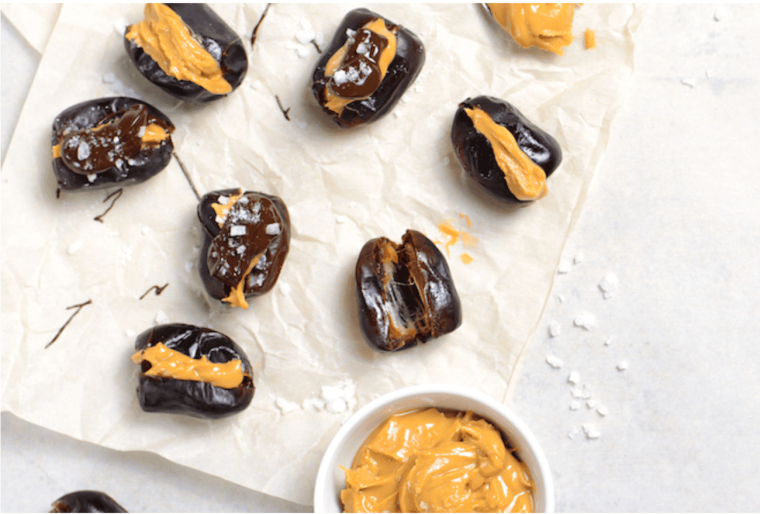
Ingredients
8 dates
3 Tbsp peanut butter
Pinch pink salt
The Method
- Remove pits from the dates.
- Spread peanut butter inside each date.
- Sprinkle with a touch of salt (optional).
- Enjoy!



